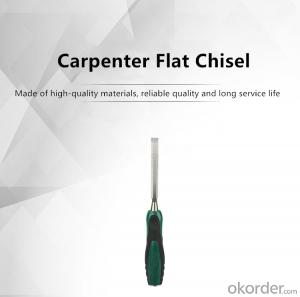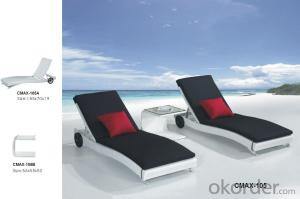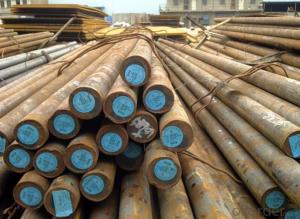3/4 Aluminum Round Stock
3/4 Aluminum Round Stock Related Searches
Led Light Bulbs For Ceiling Fixtures Led Lamps For Ceiling 42 In Ceiling Fan With Light Aluminum Coil Stock For Gutters Aluminum Foil For The Grill Hole Saw For Aluminum Plate Aluminum Tread Plate For Trailer Bow Plate For Aluminum Boat Aluminum Foil For Grow Room Aluminum Foil For Joint PainHot Searches
Stock Price For Aluminum Aluminum Coil Stock For Sale Aluminum Gutter Coil For Sale Used Aluminum Scaffolding For Sale 1/4 Aluminum Plate For Sale Aluminum Bar Stock For Sale Aluminum Round Stock For Sale Aluminum Diamond Plate For Sale Aluminum Scaffolding For Sale Craigslist 6061 Aluminum Plate For Sale Aluminum Dock Plate For Sale 7075 Aluminum Plate For Sale Aluminum Tread Plate For Sale Aluminum Checker Plate For Sale Aluminum Plate For Sale Near Me Plate Aluminum For Sale Aluminum Plate For Sale Aluminum Square Stock For Sale Aluminum Flat Stock For Sale Billet Aluminum Stock For Sale3/4 Aluminum Round Stock Supplier & Manufacturer from China
Okorder.com is a professional 3/4 Aluminum Round Stock supplier & manufacturer, offers integrated one-stop services including real-time quoting and online cargo tracking. We are funded by CNBM Group, a Fortune 500 enterprise and the largest 3/4 Aluminum Round Stock firm in China.Hot Products
FAQ
- Aluminum sheets are not known for their electrical insulation properties. Aluminum is a highly conductive metal, which means it allows electric current to flow through it easily. Therefore, aluminum sheets do not provide effective electrical insulation. If electrical insulation is required, other materials such as plastics or ceramics would be more suitable options.
- There are several different surface finishes available for aluminum sheet, each offering unique aesthetic and functional properties. Some of the common surface finishes for aluminum sheet include: 1. Mill Finish: This is the most basic and widely used surface finish for aluminum sheet. It has a smooth, raw appearance with visible grain lines from the manufacturing process. 2. Brushed Finish: This finish is achieved by brushing the aluminum sheet with a fine abrasive material, creating a pattern of fine lines. It provides a satin-like appearance and is often used for decorative purposes. 3. Anodized Finish: This finish is created through an electrochemical process called anodizing, which forms a durable oxide layer on the surface of the aluminum sheet. Anodized finishes are available in various colors and offer enhanced corrosion resistance. 4. Polished Finish: This finish involves polishing the aluminum sheet to a high gloss or mirror-like surface. It provides a reflective and elegant appearance, making it suitable for decorative applications. 5. Embossed Finish: This finish involves embossing patterns or textures onto the surface of the aluminum sheet. It adds texture and visual interest to the sheet, making it ideal for architectural and decorative purposes. 6. Powder Coated Finish: In this finish, a dry powder is applied to the surface of the aluminum sheet and then heated to form a protective and decorative coating. Powder coated finishes are available in a wide range of colors and offer excellent durability and resistance to weathering. These are just a few of the many surface finishes available for aluminum sheet. The choice of finish depends on the intended application, desired appearance, and specific performance requirements.
- Excuse me: what kind of aluminum sheet is the cheapest? Which materials are more expensive?
- According to the general arrangement from low to high prices:The first 1 lines are the cheapest, such as 1050.1060.1070..1100, which is pure aluminum;Second, 3 Department prices, such as 3003.3004.3104, etc..
- A 0.2412 gram sample of aluminum ore was dissolved in a dilute mineral acid. The solution was treated with an excess of sodium oxalate. The resultant aluminum oxalate precipitate was filtered, washed and redissolved in mineral acid, then titrated with 42.12 mL of 0.1098 N KMnO4. Calculate the percent of aluminum in the sample.
- 4Al + 6Na2(C2O4) ---- 2Al2(C2O4)3 + 6KMnO4 ---- 3K2(C2O4) Aluminum oxalate and potassium permanganate are at a 1:3 ratio.... Moles of KMnO4 C = 0.1098 mol/L v = 42.12 ml = 0.04212 L C = n/v n= CV = 0.004624776 mols Therefore moles of aluminum oxylate = 0.001541592 mol = moles of aluminum m= 26.98 g/mol * moles mass of aluminum in oxylate = 0.04159215 g % of initial sample = mass of aluminum / mass of ore = 17.24% aluminum in ore sample Perhaps check my math but the method is for sure correct.
- Yes, aluminum sheet can be used for solar panels. Aluminum is a commonly used material in the construction of solar panels due to its combination of strength, durability, and lightweight properties. It is often used as the frame or mounting structure for the panels, providing support and stability. Additionally, aluminum is highly resistant to corrosion, which is important for solar panels that are exposed to the elements. Furthermore, aluminum is a highly conductive material, allowing for efficient transfer of electricity generated by the solar cells within the panel. Overall, using aluminum sheet in the construction of solar panels helps enhance their performance, longevity, and overall efficiency.
- Aluminum sheets have high thermal conductivity properties, meaning they are excellent conductors of heat. This allows them to efficiently transfer heat and distribute it evenly across their surface.
- Engraving aluminum sheets can be done using various methods, each with its own benefits and uses. 1. Laser engraving: Among the most popular techniques is laser engraving, which employs a laser beam to vaporize the aluminum surface, resulting in a permanent and precise engraving. This method offers great precision, speed, and versatility, making it suitable for a wide range of applications. 2. Mechanical engraving: Another method involves utilizing a mechanical tool, like a rotary cutter or diamond-tipped tool, to physically remove material from the aluminum surface. This approach enables deep and intricate engravings, making it ideal for applications that prioritize durability and depth. 3. Chemical etching: For highly precise and intricate designs, chemical etching is often used. This method selectively removes material from the aluminum surface using chemicals. It is commonly employed in industries such as electronics and aerospace, where precision and high-quality finishes are vital. 4. CNC milling: By utilizing a computer-controlled machine, known as Computer Numerical Control (CNC) milling, material can be removed from the aluminum sheet with precision and complexity. This technique is well-suited for applications that require intricate or 3D engravings. 5. Hand engraving: For artistic freedom and customization, hand engraving is an option. This method involves manually creating engravings on the aluminum surface using handheld tools like gravers or chisels. While it may not offer the same level of precision as other methods, hand engraving allows for personalization. The choice of engraving method depends on various factors such as the desired design, level of detail, production volume, and budget. Each technique has its own advantages and limitations.














































